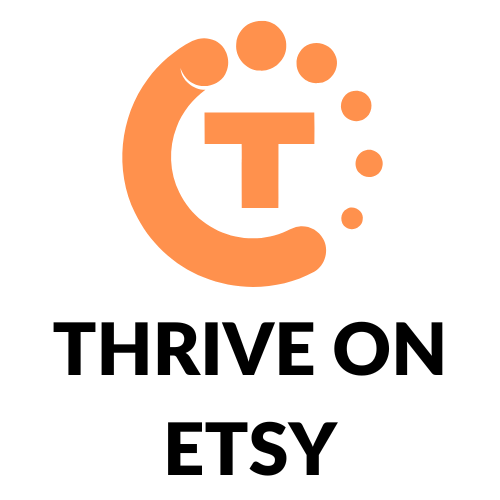Etsy is well-known for its arty products and as a platform for independent creators to market their pieces. This can take the form of handmade earrings, traditional art– or even digital art.
Getting started on Etsy can be a bit confronting, but once you’re on there it’s worth it! One of the key parts of getting started is choosing how to price your products.
In this article, we’ll be looking at how to price digital art on Etsy in order to maximize your chances of making sales. We’ll also cover some other questions around digital art sales!
What Is Digital Art?

Digital art has been created using digital mediums rather than traditional. Instead of a pencil, pen, or paintbrush, a mouse or stylus is used to create the images.
Digital art comes in many forms, so it’s a bit hard to pin down to an exact definition. Photography, digital painting using a stylus or mouse, digital collage, 3-D digital painting, and more are all examples of digital art.
In short: If it’s art, and you’ve made it using a computer– it’s digital art!
Why Should You Be Selling Digital Art on Etsy?
Etsy provides a number of advantages when you are considering a platform to sell digital art on.
Most importantly, Etsy supports product delivery by instant download. That means you don’t need a separate site to host and share your images! This can save you time and money, as you don’t need to host and maintain your own web servers, and it also makes the experience for your customers as seamless as possible.
Etsy is also well-known for offering art products. Other digital marketplaces also support art product sales, but Etsy is probably the best-known!
With a user base in the millions, selling on Etsy means that you’ll get your products in front of as many potential customers as possible.
These first two points apply both to new Etsy users who are setting up only to sell their digital art, and to more experienced sellers who may have other products already in rotation.
However, there are a couple of other benefits to selling digital art on Etsy if you already have a shop set up.
Firstly, digital art doesn’t take up any inventory space, and you don’t have to negotiate shipping — it’s just a file, after all.
Secondly, you can sell the same file multiple times, just as you’d sell multiple prints of a traditional artwork. This means you don’t need to replicate the file.
If you’re looking to bulk up your store offerings, but don’t have the space to store additional traditional products, digital art could be a great option to add to your store.
It will make your store look more populated and professional, as well as diversify your offerings– meaning you can unlock more of the Etsy consumer market!
How Much Is Digital Art Sold for on Etsy?
Digital art ranges widely in price on Etsy. A search of “digital art” on the site brings up around 7.5 million results, ranging from $0.05 to $176.48 (and above).
The exact price digital art sells for on Etsy depends heavily on what is being offered. Small and simplistic prints are typically on the cheaper end of the spectrum, while made-to-order digital art fetches prices at the higher end.
How to Price Digital Art on Etsy

Define Your Market and Demand

The first step for selling any product is deciding who you are selling it to.
This allows you to do two things — determine exactly how you will construct your product, and how you will price it.
The same is true for digital art. You should first consider who you want to buy your digital art.
Are you aiming at the everyday consumer who has a small to moderate amount of discretionary income? Or the art collector who can afford to splurge a little more on their purchases?
Understanding your market before opening your Etsy shop will allow you to quickly progress through other parts of determining how to sell your digital art and how to price it.
The next thing to think about is how much demand you expect for your products. Your pricing will change depending on the volume of art that you sell.
If you expect to sell only one piece a week, you’ll likely want to price it reasonably high to ensure that you are actually making money. If you are expecting to sell several pieces a week, you can afford to price each individual piece at a lower cost.
Demand depends on both the audience you are targeting and the pace at which you can churn out new digital art products.
If you can only produce and distribute one piece of digital art a week, then this will limit the amount of sales you can make and so dictate the demand that you can sustain.
Additionally, if you have a more specific kind of art that attracts fewer customers on average, then this will also dictate your demand.
To determine exactly how much demand you’d expect from your target audience, you can look for shops on Etsy that sell similar wares and see what their sales volume is like.
Define Your Type of Art

This is the next step in terms of pricing your art, and will follow on from choosing your target audience.
If you’re targeting the casual art consumer, you’re probably not looking at extremely intricate and detailed art creation.
On the other hand, if you’re targeting art collectors or those looking for custom pieces, you’ll be creating much more intricate art.
As well as this, you’ll want to consider how big your art pieces are. This is because art size is taken into account by both you and your customers.
Customers are often willing to pay more for a larger piece of art, even if the effort and material costs are the same.
This trend is seen in other industries as well. For example, board games are often sold in larger boxes to justify their higher price points, even though their components could fit in a much smaller box.
In terms of your own work, larger pieces of digital art take more time to create.
It can be more difficult to slap on large quantities of “paint” in digital art than in traditional, as you have to define where the paint goes before you can use the fill tool in most digital art programs.
And of course, most large pieces of digital art don’t just involve block colors — they instead include more details and sub-elements.
This means you’ll be spending much more time on creating the work, which you’ll want to be fairly compensated for!
Compute Your Costs And Margins

At the end of the day, you are running a business. You want to be making money, not losing it.
Digital art has fewer overhead costs than traditional art. For example, you don’t need to buy paints, pens, or pencils. But opening a digital art Etsy shop definitely isn’t free!
Many digital art platforms require annual subscriptions, which are often quite expensive. You’ll also need to consider upkeep of your digital hardware, such as your computer or drawing tablet, and the electricity cost of running these machines.
As well as this, you’re not working for free! You should consider how much you feel your art is worth per hour.
This will heavily depend on how in-demand your art is, and how skilled you are at your work. To help you decide on an hourly rate, you can consider a few things:
- How much money do you need to make from your art sales for it to be viable?
When thinking about this, consider this: Are you trying to make art sales your main source of income? You’ll need to make sure your pricing is at a value that could conceivably pay your rent, food, and transport, as well as other bills.
If art sales are more of a side hustle, you don’t necessarily need to worry about this as much.
- How much would you get if you were working at minimum wage?
Minimum wage varies, so make sure you know what it is where you live. Then, think about how long you would spend on an art piece on average, and how many of that piece you would aim to sell.
If you sell all of the pieces you’re aiming to, will you be paying yourself minimum wage for your time? If not, it could be worth upping the price of your artwork.
- How long have you been doing digital art/how well trained are you?
A well-trained professional can charge a higher hourly rate than an amateur. If you have several years of digital art experience under your belt, compare your hourly rate to that of people at least a rung or two above minimum wage on the pay ladder.
Now that you know roughly how much you need to make the costs and income work out, it’s time to consider whether you want to add any extra markup on your products.
This is where you can circle back to the audience you’re targeting. Are the products you’re selling at their current price point within the right price range?
If they’re under the top end, you can afford to increase your profit margin on each piece. If they’re too high, you may need to reevaluate how much your hourly rate is, or whether you need to target a different audience.
Do Competitor Research

Etsy is great because of its huge reach, engaging millions of potential customers. However, this also means that there are millions of competitors!
Looking for competitors on Etsy is a great way to get a rough idea of how much digital art is selling for.
Make sure you aren’t hugely overpriced compared to your competitors. If you are then you won’t get any customers!
Similarly, if you’re looking at your competitors and notice your products are priced significantly lower, you could consider increasing your prices.
Alternatively, you could keep them low as a selling point to try and get more customers coming to you rather than your competitors.
The key thing to remember when doing competitor research is not just to look at every single result for “digital art” on Etsy.
Make sure you’re looking at products of similar quality to your own. If you’re selling large and intricate landscapes, don’t look at cartoon portraits, as these will have a different selling environment.
As well as this, don’t limit your search to Etsy! Although most of your direct competition will come from there, you can also look for pricing guides from sellers on other platforms.
How Do I Know If My Art is Good Enough to Sell on Etsy?

You don’t!
Okay, that’s not particularly helpful. Let’s break it down.
If you’re reading this article, you’re presumably pretty confident that your art is worth something.
Otherwise, you wouldn’t have made it to this stage! However, to quench those little niggling doubts and derisory voices in your head, there are a few things you can do.
Posting your art on social media can give you an indication of how many people are interested in what you make.
Getting traction on social media can take a while, so remember to be patient. However, if you get lots of genuine interaction with your posts, you can be pretty confident your art is good enough!
Comparing your art to your competitors is also a good way to decide if it’s sufficiently high quality. If it looks about the same quality to you, you’re probably good to go.
The only way you’ll truly know if your art is good enough to sell on Etsy is to give it a go.
Like any business venture, there’s a chance you may not get many customers, and this could indicate you need to change things about your products before they’ll start selling. This could be quality or price point.
Ultimately, sales will tell you if your art is good enough to sell on Etsy!
Key Takeaways
Selling digital art on Etsy can be a great way to get your art out into the world and start making money from your passion.
Pricing your art is super important to a successful Etsy store. Remember to:
- Consider your target audience and demand
- Consider the type of art you make
- Consider the costs of making the art, and your general overheads
- Consider how much your competitors are selling their products for.
Hopefully you’re now better equipped to price your digital artwork on Etsy. Go and get selling!

